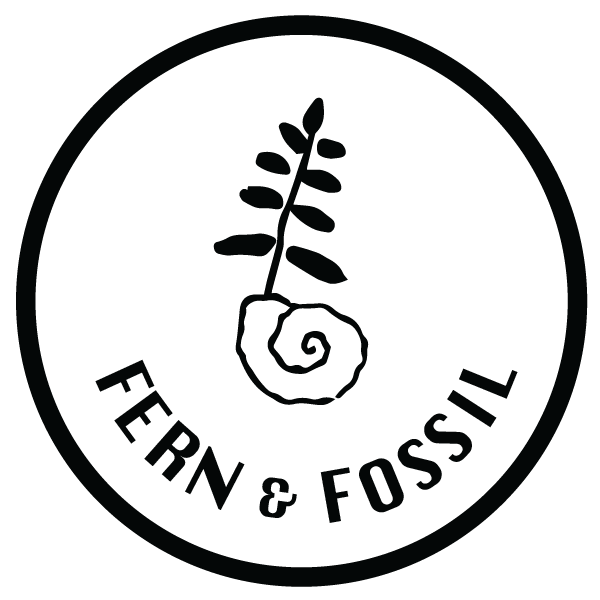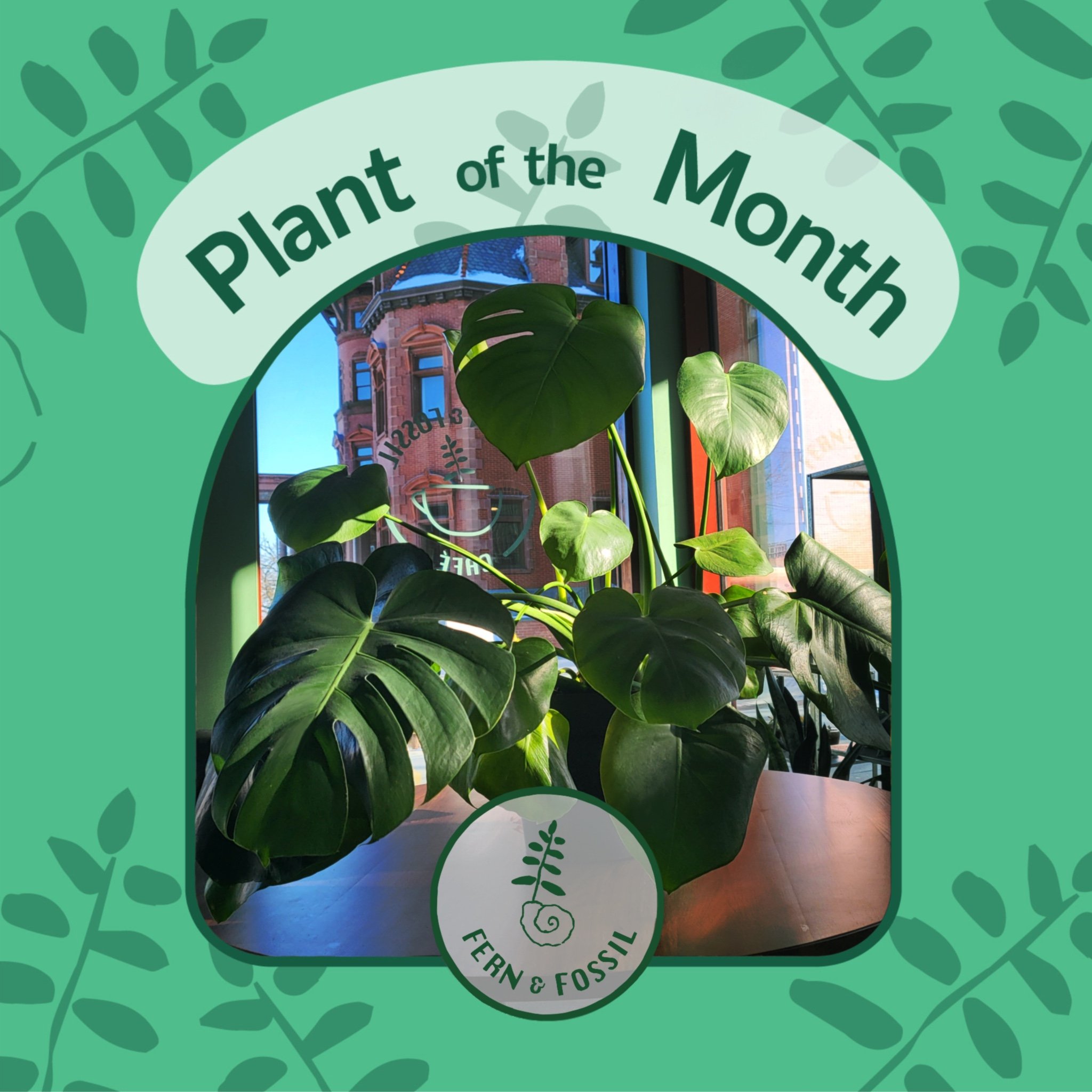Plant of the Month February 2025: Monstera (Monstera deliciosa)
Back at it with another Plant of the Month! It’s February: the coldest or most romantic month of the year, depending on how you’d rather look at it. Valentine’s Day is just around the corner (literally just two days from now!). If you’re still looking for date night plans, join us at Fern & Fossil for a Valentine’s Day Plant & Sip this Friday from 7:30 - 9:00 PM. What could be more romantic than a night sipping on drinks and planting succulents with your honey? Plus you can see our February Plant of the Month, Monstera deliciosa, in person when you stop by to get a better look!
Monstera deliciosa, usually just referred to as Monstera, is a flowering plant in the Araceae family known for its uniquely shaped leaves. This plant is sometimes called the Swiss Cheese Plant or Cheese Plant due to the appearance of holes or “eyes” in the leaves similar to the holes you find in some Swiss cheeses. It’s also been referred to as delicious monster, fruit salad plant, fruit salad tree, Mexican breadfruit, windowleaf, balazo and Penglai banana. Monstera deliciosa is named after the delicious edible fruit that grows when planted in its native climate. Monstera fruit is generally comparable to both pineapple and bananas, the smell of the fruit is very similar to a cross of the two fragrances. This fruit, like many others in the Araceae family, contain needle-like structures of calcium oxalate called raphides and trichosclereids which can cause irritation of the mouth when the fruit is unripe. Monstera fruit can take a long, long time to ripen, often taking more than a year to reach maturity. The process of ripening in monstera fruit is similar to bananas.
That said, you won’t find indoor monstera plants capable of producing flowers or fruit. Not unless you want to mimic the conditions of its native habitat. Monstera is native to tropical forests in Southern Mexico and across Central America to Panama, often found in the lowlands and middle mountains. Monsteras have been introduced to other tropical climates, however they’ve been found to be mildly invasive in Hawaii, Seychelles, Ascension Island and the Society Islands. Generally, you can’t really plant Monstera outdoors in the US, unless you live in Florida. So if you’re in the Northeast like us at Fern & Fossil, you’ll want to stick to growing them indoors. While you might not be able to get Monstera to flower, it’s still a beautiful plant regardless and a wonderful addition to any home.
Although Monstera can grow much taller in nature, they reach a maximum height of about 6 to 8 feet when grown indoors. This is because Monstera plants like to climb trees and trellises to grow nice and strong. Older and mature plants will have more perforations and holes in their leaves. Monstera plants are a great low maintenance plant for beginners and pros alike. They’re not too greedy about water, usually preferring just enough water to keep the soil moist. Here at Fern & Fossil, we bottom water our Monstera in the sink just once a week to keep her healthy and lush. This plant likes to have plenty of space to grow and enjoys loose, well draining soil. A combination of equal parts potting soil and compost is best for these plants. Monstera also likes bright exposure to sunlight, but not direct light or the leaves will crispen and burn. A word of caution however! Remember those raphides and trichosclereids we talked about earlier? These calcium oxalate crystal structures can be harmful to pets! Monstera leaves can be mildly toxic to pets and can cause harm to the mouth, tongue, and digestive tract. It can even cause dermatitis in both cats and dogs. So be sure to place any Monstera plants far from reach of any animals that might come in contact with it.
Monstera/Swiss Cheese Plant (Monstera deliciosa) needs the following care:
Light ☀️ Partial Shade
Water 💧 Only when soil is completely dry. Do not overwater
Grow 🌱 This is not a cold hardy plant. For best results avoid temperatures below 40 F





